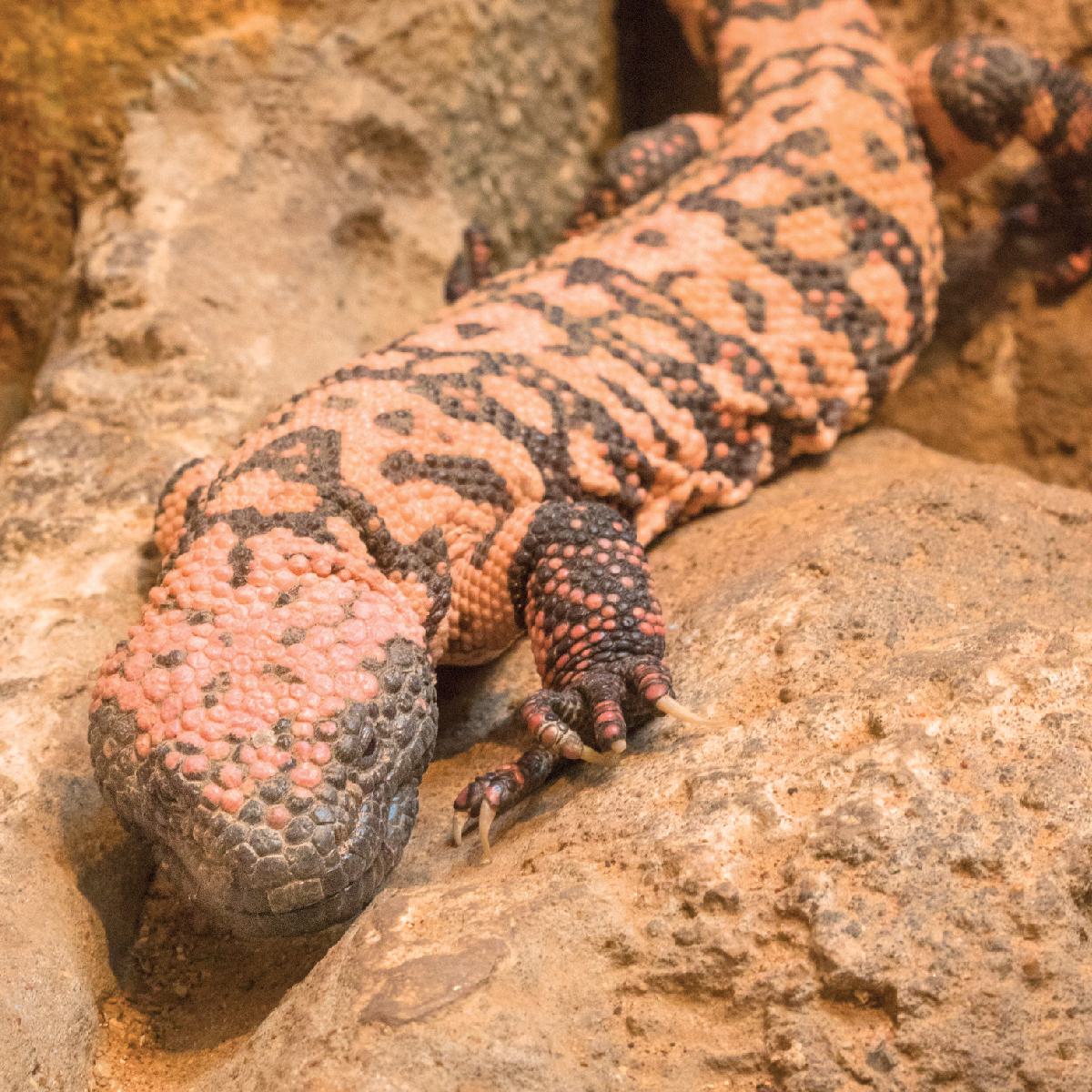
Banded Gila Monster
Heloderma suspectum cinctum
Did you know?
- Banded Gila monsters are part of the Helodermatidae family, which they share with other beaded lizards.
- They are named after the Gila Basin in Arizona.
- They live in desert areas with shrubs and small trees in Southwestern United States and Northwestern Mexico.
- Females usually lay three to 12 eggs at a time in midsummer.
Beaded Body
Gila monsters are a type of beaded lizard, so called because of the bead-like scales covering their head and back. Gila monsters come in two distinct color patterns. Banded Gila monsters have alternating pink and black bands across their body. Whereas reticulated Gila monsters are more mottled. The Gila monster's coloring may serve as camouflage, or it may be a warning to potential predators.
Venomous
The Gila monster is one of only a few venomous lizard species in the world. The venom is generally used to thwart an attacker (rather than to subdue prey). When Gila monsters bite, venom flows from glands in the lower jaw to the bottom teeth, which have grooves that carry the liquid to the victim's body. They are immune to their own venom.
Threat Level
- Unknown
- Common
- Near Threatened
- Threatened
- Endangered
- Critically Endangered
- Extinct in the Wild
Near Threatened
The Banded Gila Monster faces a risk of extinction in the wild.
Range
Southwestern United States and Northwestern Mexico
Habitat
Desert areas with shrubs and small trees; mountain slopes

We care about banded Gila monsters
Banded Gila monsters are hurt by habitat loss due to urban development and agriculture and the illegal pet trade. The Saint Louis Zoo supports this species in the Charles H. Hoessle Herpetarium at the Zoo. Learn more about how we are helping wildlife around the world.
Find this animal in Historic Hill

SAINT LOUIS ZOO ZONE
Historic Hill
Historic Hill is a lovely stroll through one of the oldest parts of the Saint Louis Zoo. From the 1904 World’s Fair Flight Cage to the Spanish architectural flavor of the 1920s in the Bird House, Primate House and Herpetarium to the finishing touches of our thoroughly modern exhibits, this area of the Zoo has a unique ambiance and a nostalgic history that make it a great destination.

